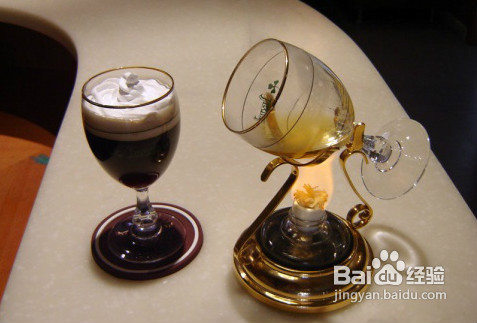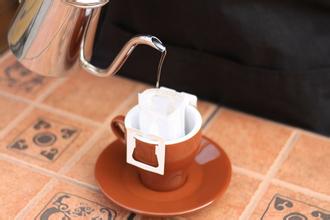The coffee variety with the highest caffeine content-the caffeine content of a cup of coffee
The coffee variety with the highest caffeine content-the caffeine content of a cup of coffee
Caffeine is also a common ingredient in soft drinks, such as cola, which was originally made from cola fruit. A soft drink usually contains 10 to 50 milligrams of caffeine. Energy drinks, such as Red Bull, contain 80 milligrams of caffeine per bottle. The caffeine in these drinks comes from the original ingredients they use or the additives obtained from decaffeinated coffee, and some are chemically synthesized. Guanana, the basic ingredient of many energy drinks, contains a lot of caffeine and a small amount of theobromine. Naturally occurring sustained-release formants contain a small amount of theophylline. The world's main source of caffeine is coffee beans (the seeds of coffee trees), which are also the raw materials of coffee. The caffeine content in coffee largely depends on the variety of coffee beans and the method of making coffee, and even the caffeine content of coffee beans in the same tree varies greatly. Generally speaking, the amount of caffeine in a cup of coffee ranges from 40 mg in espresso to 100 mg in espresso. Deep-roasted coffee generally contains less caffeine than light-roasted coffee because roasting reduces the amount of caffeine in coffee beans. Arabica coffee usually contains less caffeine than medium-fruit coffee. Coffee also contains trace amounts of theophylline, but not theobromine.
Tea is another important source of caffeine. The caffeine content of each cup of tea is generally only half that of each cup of coffee, depending on the intensity of tea production. Certain varieties of tea, such as black tea and oolong tea, contain more caffeine than other teas. Tea contains a small amount of theobromine and slightly higher theophylline than coffee. The making of tea has a great influence on tea, but the color of tea can hardly indicate the amount of caffeine. The caffeine content of Japanese green tea is much lower than that of many black teas, such as Zhengshan race tea, which contains almost no caffeine.
According to an ancient Mongolian myth, Shennong, the Chinese emperor around 3000 BC, discovered by chance that some leaves floated into boiling water to produce a fragrant and refreshing drink. The name of Shennong is also mentioned in Lu Yu's Classic of Tea, an ancient book about tea. The early history of coffee is hazy, but a widespread myth takes us back to Ethiopia, the birthplace of Arabica coffee. According to this myth, a shepherd named Kadi found that goats become excited when they eat berries on coffee bushes and lose sleep at night, and goats constantly eat the berries again to experience the same vitality. The earliest written record of coffee is probably Bunchum written by Persian physician al-Razi in the 9th century. In 1587, Malaye Jaziri compiled a book that traces the history and legality of coffee, called Umdat al safwa fi hill al-qahwa. In this book, Jaziri records that Jamal-al-Din al-Dhabhani, an Islamic imam of Aden, was the first person to drink coffee in 1454, and after the 15th century, Sufi Muslims in Yemen began to drink coffee regularly to keep awake during prayer. Towards the end of the 16th century, European residents in Egypt recorded the use of coffee, around which time coffee began to be widely used in the near East. Coffee was the most popular drink in Europe in the 17th century and was originally called Arabian wine. During this period, coffee shops began to increase, and the first coffee houses were in Constantinople and Venice. In England, the first coffee shop opened in 1652 on St. Michael Lane on Cornhill Street in London. Coffee soon became popular in Western Europe and played an important role in social communication in the 17th and 18th centuries.

Important Notice :
前街咖啡 FrontStreet Coffee has moved to new addredd:
FrontStreet Coffee Address: 315,Donghua East Road,GuangZhou
Tel:020 38364473
- Prev

Coffee baking curve data-how to design parameters of coffee baking curve
Coffee roasting curve data-how to design the parameters of coffee baking curve in a sense, as long as you usher in an explosion of coffee beans, you can cool, grind and drink, but it is still a very shallow degree of baking. maybe it's not the best baking degree we want. Next, we should pay close attention to the stage of baking and observe the raw bean appearance of coffee by sampling.
- Next

What is hanging-ear coffee? How many times can I brew the hanging-ear coffee at most?
Brewing method: 1. Put the earbag open and hang it in the coffee cup, preferably with a deeper coffee cup. Steam for 20-30 seconds with hot water at 85 degrees Celsius (the water temperature in the office water dispenser is enough) to soak all coffee powder, which can make the cell wall of coffee beans expand, which is beneficial to the aromatic substances during extraction.
Related
- Beginners will see the "Coffee pull flower" guide!
- What is the difference between ice blog purified milk and ordinary milk coffee?
- Why is the Philippines the largest producer of crops in Liberia?
- For coffee extraction, should the fine powder be retained?
- How does extracted espresso fill pressed powder? How much strength does it take to press the powder?
- How to make jasmine cold extract coffee? Is the jasmine + latte good?
- Will this little toy really make the coffee taste better? How does Lily Drip affect coffee extraction?
- Will the action of slapping the filter cup also affect coffee extraction?
- What's the difference between powder-to-water ratio and powder-to-liquid ratio?
- What is the Ethiopian local species? What does it have to do with Heirloom native species?

